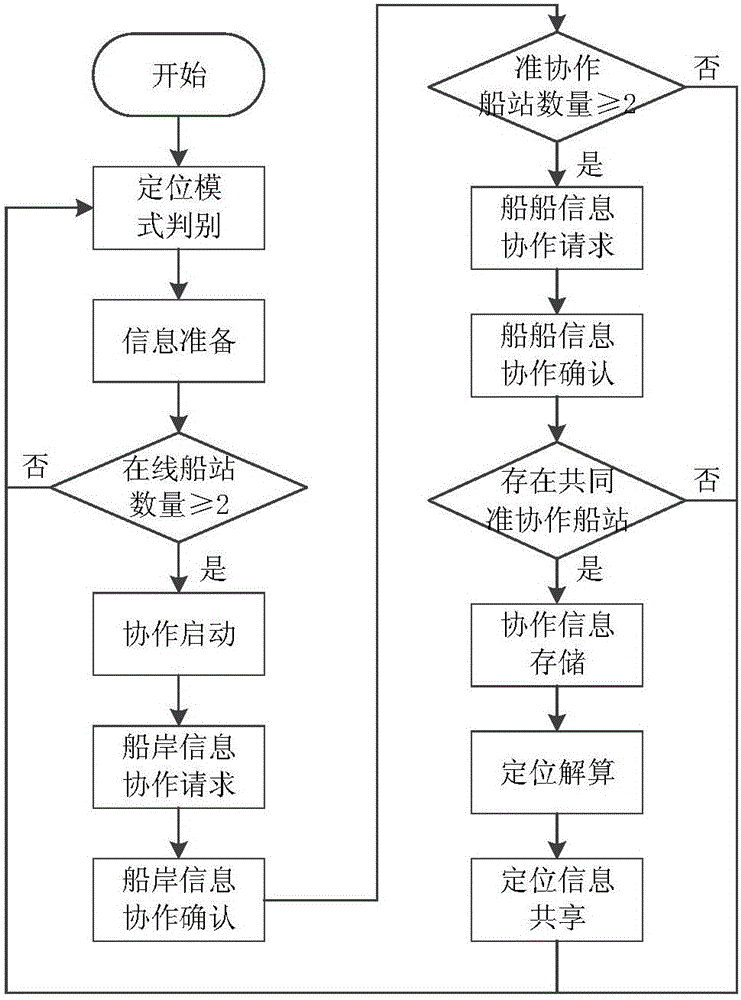Two AIS (automatic identification system) reference point-based ship self-organization cooperative localization method
A collaborative positioning and self-organizing technology, applied in the field of ship positioning and navigation, can solve problems such as unhandling
- Summary
- Abstract
- Description
- Claims
- Application Information
AI Technical Summary
Problems solved by technology
Method used
Image
Examples
Embodiment Construction
[0052] The present invention will be further described below in conjunction with the accompanying drawings and embodiments.
[0053] figure 2 An embodiment scenario of the present invention is illustrated.
[0054] 201 and 202 are two AIS shore stations, and 213, 214 and 215 are three AIS ship stations. According to the propagation distance of the AIS signal, the ship stations 213 , 314 , and 315 can only receive signals from the two AIS shore station reference points 201 and 202 . 213, 214, and 215 constitute a cooperative ship station group, 213 is the master cooperative ship station, and 214 and 215 are slave cooperative ship stations. The slave cooperative ship stations 214 and 215 share the ranging information 2241 , 2242 , 2251 and 2252 between the ship and shore under the ship-shore information cooperation request of the master cooperative ship station 213 . The slave cooperative ship station 214 shares the ship ranging information 2245 with the slave cooperative sh...
PUM
 Login to View More
Login to View More Abstract
Description
Claims
Application Information
 Login to View More
Login to View More - R&D
- Intellectual Property
- Life Sciences
- Materials
- Tech Scout
- Unparalleled Data Quality
- Higher Quality Content
- 60% Fewer Hallucinations
Browse by: Latest US Patents, China's latest patents, Technical Efficacy Thesaurus, Application Domain, Technology Topic, Popular Technical Reports.
© 2025 PatSnap. All rights reserved.Legal|Privacy policy|Modern Slavery Act Transparency Statement|Sitemap|About US| Contact US: help@patsnap.com



